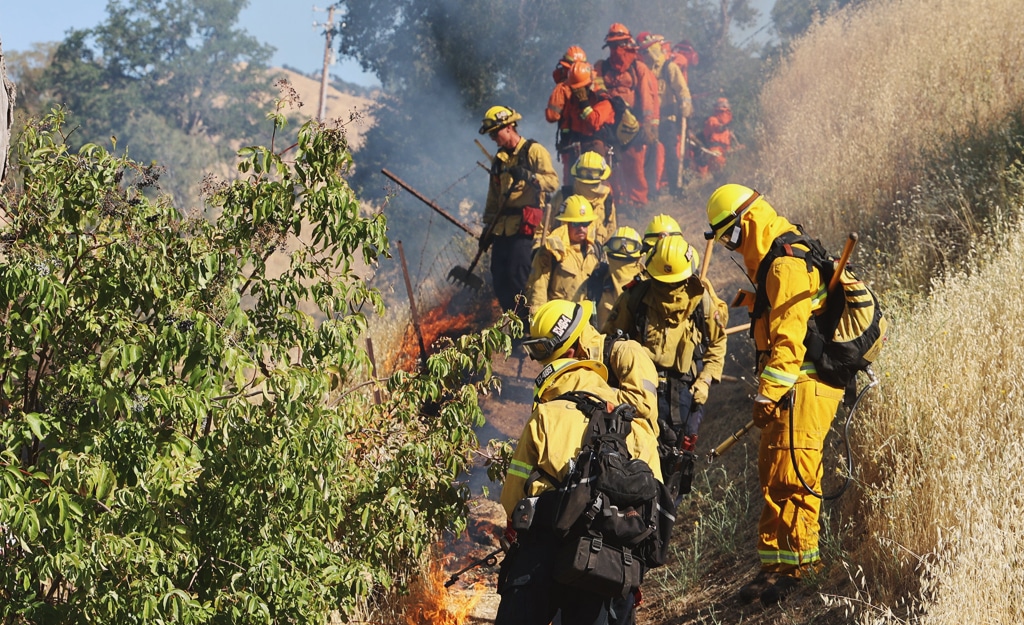Prescribed Fires
Understand what prescribed fires are and why we use them in California.

Why do we need prescribed fires?
Year-round wildfires are a common occurrence in California. Each day, new fires ignite across the state, and some of these fires can escalate into destructive, fast-spreading disasters, endangering communities and property.
CAL FIRE employs various methods to mitigate the risk of severe damage from large wildfires on our lands and in our communities, and one of these is prescribed fire.
When can you use prescribed fires?
State law defines prescribed fire as a carefully planned and controlled application of fire on pre-selected lands to achieve specific objectives:
- Watershed management: Prescribed fires play a crucial role in protecting watersheds.
- Range improvement: They support the improvement of rangelands.
- Vegetation management: Prescribed fires help manage vegetation effectively.
- Forest improvement: They contribute to the overall health of forests.
- Wildlife habitat improvement: Prescribed fires aid in creating better wildlife habitats.
- Air quality maintenance: They assist in maintaining air quality.
While wildfires can wreak havoc, prescribed fires are strategically executed by CAL FIRE during appropriate fuel and weather conditions to align with one or more of these objectives.
Prescribed fires have a long history in California
Wildfires have long been a natural part of California’s landscape, serving as an agent of change necessary to maintain the health and resilience of our forests.
Native Americans in California used fire as a tool for hunting, encouraging plant growth for food and tools, and rarely considered fire something to suppress.
Prescribed fires continue this tradition, protecting our communities and the natural beauty that surrounds us for future generations to enjoy.
Understanding prescribed fires
Frequently asked questions
Prescribed fires are known by several names, including Rx fires, controlled burns, hazard reduction burns, vegetation management burns, and planned burns. Each name highlights different aspects of their purpose and methodology.
No, it’s a collaborative effort. CAL FIRE works with federal and state agencies, tribal governments, fire departments, local communities, and landowners to ensure the safe and effective execution of prescribed fires, with careful planning and consideration.
Skipping prescribed fires in fire-adapted ecosystems can be risky. Careful planning – considering factors like weather, fuel conditions, public safety, and economic impact – ensures that prescribed fires bring environmental and management benefits while minimizing risks.
Absolutely. Our fire management team actively communicates about prescribed burns through social media, local news releases, and road signs. You’ll always be aware of any prescribed fires near your community.
Unlike the unpredictable smoke from wildfires, we can manage smoke from prescribed fires. Our plans account for factors like location, fuel, moisture, and weather to control smoke. If conditions aren’t right, we delay the prescribed fire to minimize the impact on air quality.
Explore the following resources for more insights into prescribed fires:
- Working CAL FIRE Unit: Cal Fire Contacts | CAL FIRE
- Northern California Prescribed Fire Council
- Vegetation Management Program | CAL FIRE
- US Forest Service Lake Tahoe Basin Management Unit Prescribed Fire Activity
- US Forest Service Sierra National Forest Prescribed Fire Information
- Sierra Forest Legacy – Fire MOU Partnership
- California Prescribed Burn Associations Cal PBA
- Beneficial Fire – California Wildfire & Forest Resilience (wildfiretaskforce.org)
- Fire Forward – Audubon Canyon Ranch (egret.org)
- Smoke Management Programs and Burn Decisions – Other Air Districts | California Air Resources Board
- Smoke Sense Data Visualization Tool | US EPA
- PFIRS – Prescribed Fire Information Reporting System (ca.gov)
For any further questions about prescribed fires, please contact your local CAL FIRE Unit. They’re always ready to provide detailed and helpful information. Contact CAL FIRE Units.